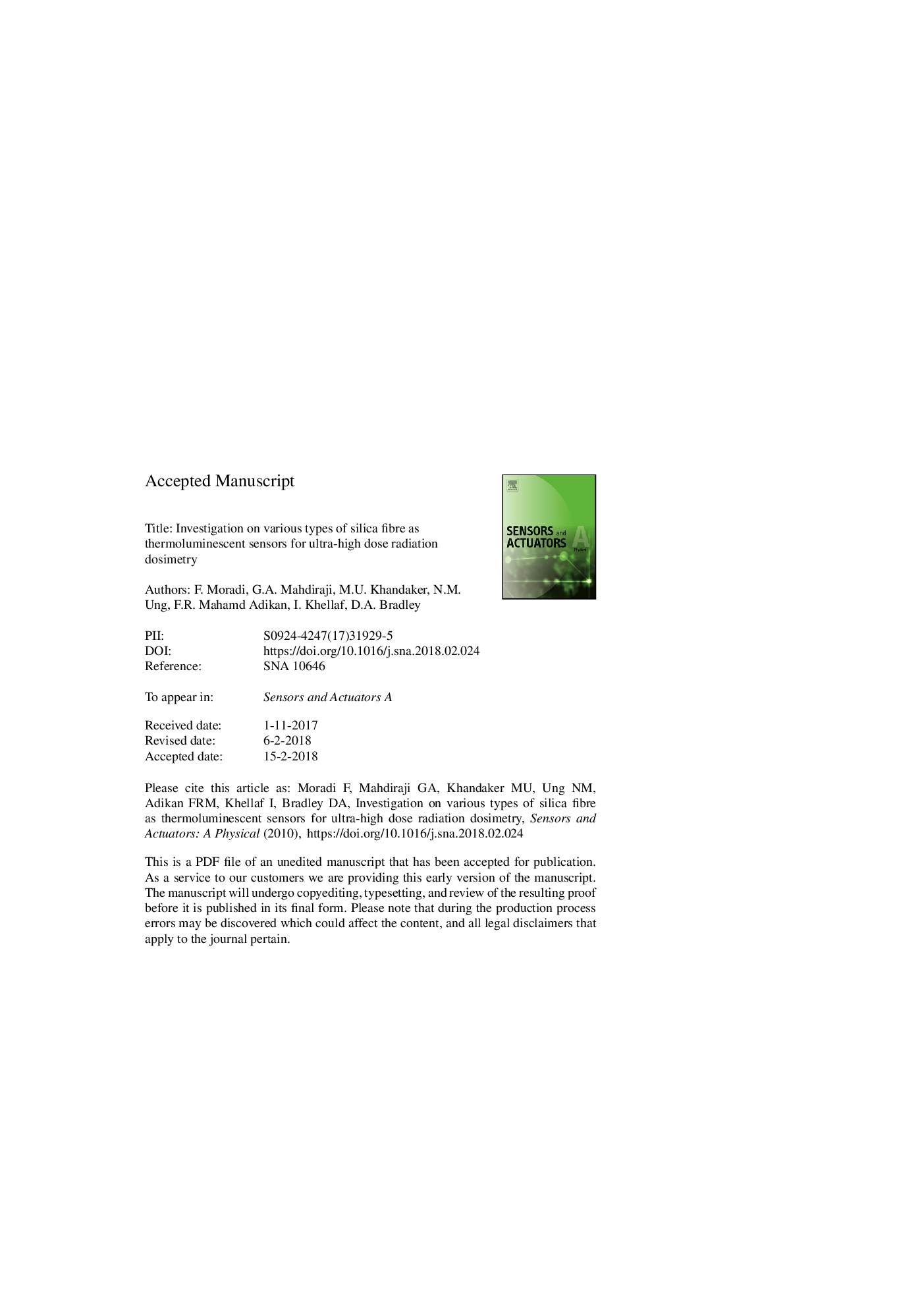| Article ID | Journal | Published Year | Pages | File Type |
|---|---|---|---|---|
| 7133507 | Sensors and Actuators A: Physical | 2018 | 19 Pages |
Abstract
With high-dose applications lacking the benefit of an economic yet versatile dosimeter that provides for a wide dynamic dose range, ongoing research is seeking to introduce suitable thermoluminescent (TL) material for such needs. Acknowledging the high potential of silica fibres, as developed by members of this group over the past few years, in present work evaluation has been made of 13 types of fibre, differing in dopant, dopant concentration and diameter including Pâ, Alâ, Erâ, Geâ and Al-Tm-doped fibres, ultra-high numerical aperture and borosilicate fibre, and two non-doped fibres, quartz and suprasil F300. Evaluation is made in terms of TL response to photon and electron irradiations with the objective of determining a TL material that can offer sensitive yet extended dose capability, saturating only above the few tens of kGy range. The various silica fibres that have been investigated were found to show saturation levels from 5â¯kGy for Ge-doped fibre (4â¯mol %) to 80â¯kGy for 2â¯mol % Alâdoped silica fibre. Borosilicate fibres demonstrated the greatest potential for high dose dosimetry, maintaining a highly-linear response, any tendency towards saturation only being indicated to beyond receipt of doses of 100â¯kGy. For this fibre type detailed TL characterizations were conducted, including glow curve analysis, reproducibility and fading tests. The results suggest borosilicate fibre to be suitable for high dose TL dosimetry, providing sufficient sensitivity and appropriate dosimetric characteristics.
Related Topics
Physical Sciences and Engineering
Chemistry
Electrochemistry
Authors
F. Moradi, G.A. Mahdiraji, M.U. Khandaker, N.M. Ung, F.R. Mahamd Adikan, I. Khellaf, D.A. Bradley,
